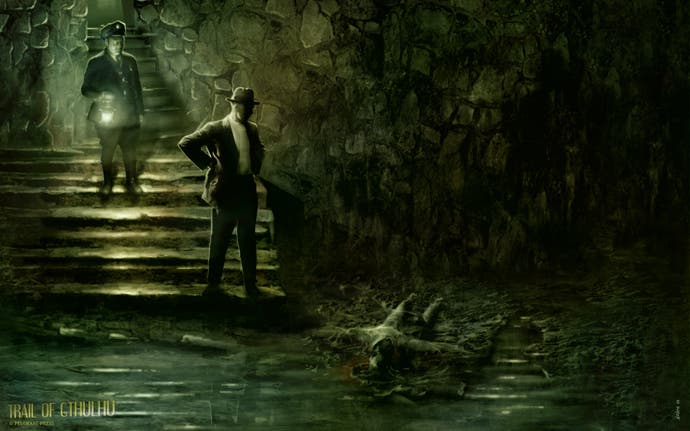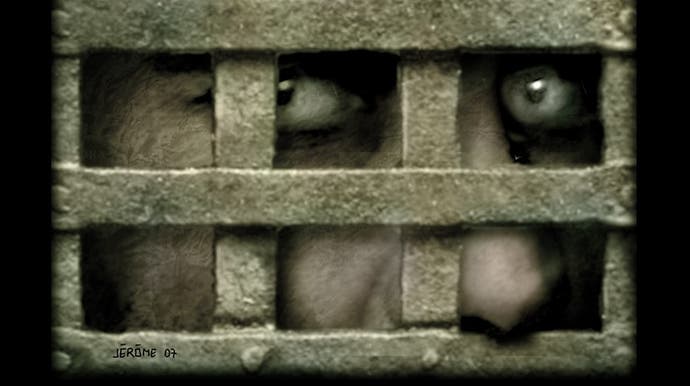Dicebreaker Recommends: Trail of Cthulhu, a horror RPG where solving mysteries matters more than shooting monsters
Clues over boos.
Dicebreaker Recommends is a series of monthly board game, RPG and other tabletop recommendations from our friends at our sibling site, Dicebreaker.
Whether it's on-screen or on the tabletop, the subgenre of horror games based in, on and around the Cthulhu mythos is more crowded than the bottom of the Gardner Farm well.
The pantheon of Old Ones created by horror writer and horrible person HP Lovecraft is likely most familiar to pen-and-paper roleplayers through Call of Cthulhu, the RPG originally published in 1981 that is to tabletop horror what Dungeons & Dragons is to fantasy. (In Japan, the game's recent resurgence has even seen it replace D&D as the go-to example for tabletop roleplaying as a whole.)
Four decades and seven editions later, the RPG has star-spawned the separate Arkham Horror Files series that includes the likes of Eldritch Horror and Mansions of Madness, multiple video game adaptations, and numerous tabletop successors, including a short-lived Magic: The Gathering-style collectible card game and spin-off RPGs.
Among the best of these descendants is Trail of Cthulhu, a standalone tabletop RPG that swaps Call of Cthulhu's Basic Role-Playing system for the Gumshoe framework developed by designer Robin D. Laws. Published by Pelgrane Press and designed by Kenneth Hite, Trail of Cthulhu opted for a focus on the engrossing mystery of Lovecraftian horror tales over conflict, offering players an experience that was both more forgiving and easier to pick up and play.
Call of Cthulhu's reliance on percentile (d100, often calculated using two ten-sided dice - one for tens and another for ones) rolls in combination with the doom-and-gloom lore of the mythos meant that it was typically a punishing experience, in which players' characters could be quickly torn to shreds by a terrible sea monster or inflicted with mental trauma as they delved the depths of forbidden knowledge. Like a horror movie, watching your humans suffer through unimaginable horrors before meeting a grisly end was often half the point.
While it made sense that players' investigators often couldn't match up to cosmic beings from beyond the stars in one-on-one combat, what made less sense was having to rely on successful rolls to progress the mystery at the heart of scenarios forward. The best Cthulhu-adjacent stories are as much about conspiracies, cults and cover-ups as they are tentacle-mouthed nightmares, and players' characters typically aligned with this - they were journalists, detectives, librarians and professors hunting for clues rather than toughened fighters or magic-casting superhumans. But a few bad rolls could quickly break the logic of a mystery, leaving the game master running the game having to improvise awkward reasons why an observant investigator might overlook an obvious clue just because the player fluffed a roll, and ways to get the story back on track.

The Gumshoe system used in Trail of Cthulhu solves this. Gone are complicated calculations, replaced by a beautifully straightforward system. Players begin the game with a pool of points in their character's traits, broken into general abilities such as athletics, stealth and scuffling, and those specifically helpful when investigating - specific knowledge regarding cryptology, anthropology or even art history.
The key here is that players never have to roll to discover something they would already know, or have no risk of failing. An experienced archaeologist would be able to identify a particular artefact, for instance, while someone who knows Japanese as a language would be able to translate a text written in kanji. That means that clues can never be overlooked if players look in the right places and ask the right questions, making a session of Trail of Cthulhu more faithful to solving an investigative mystery using your wits and knowledge than just getting lucky with your rolls.

Players can choose to spend their points in a trait to discover more about a clue that might help them interpret the evidence further, but the essentials are always given for free. If there is a chance of failure while performing an action - usually in combat, or doing more demanding tasks such as running from monsters - players roll a single six-sided die, spending points from their pool to boost the chance of success.
With its lean, beginner-friendly ruleset and focus on rewarding players' critical thinking over dooming them on the whim of a die, Trail of Cthulhu manages to offer something that feels fresh in the stale genre of Lovecraftian games and horror roleplaying as a whole. It brings the dark mystery and engrossing discovery back to stories, balancing the existing knowledge of players' characters with the revelations they uncover during a campaign. Players' fate is largely put back in their hands, without removing the chance for moments of tension and drama.

Trail of Cthulhu has seen a number of campaigns and one-shot scenarios released specifically for the system, as well as conversions of classic Call of Cthulhu adventures that allow players to experience them through more of an investigatory lens. The core rulebook itself comes packed with Hite's detailed notes on the mythos and its lore, giving players plenty of material to craft their own mysteries.
Even if you're understandably tired of playing Yet Another Cthulhu Game, the Gumshoe system has a lot to offer would-be sleuths and those interested in solving cases with friends. If you're after something to live out your detective fantasies - be they more Holmes, Marple or Knives Out - consider cracking open a copy in place of D&D next game night.


